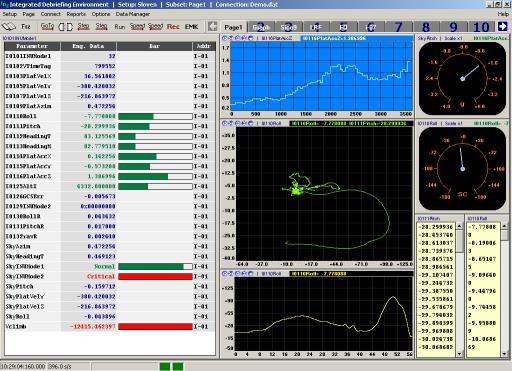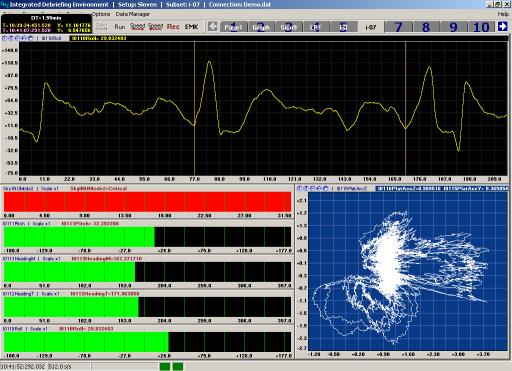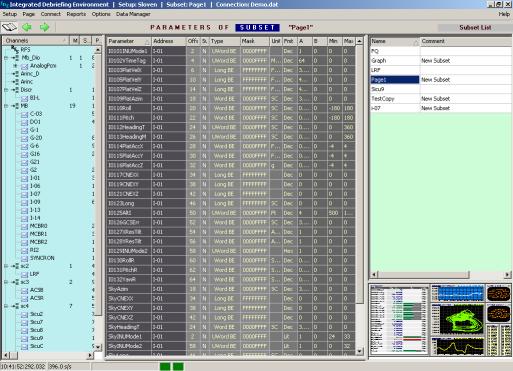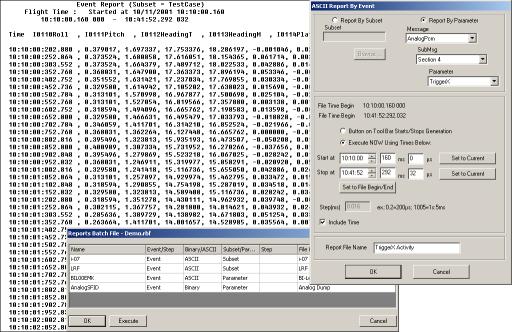The Setup module allows to create a new setup and modify an existing one. It defines the input sources (Data Source Handlers - DSH), their communication parameters, the messages these channels provide and drills down to the single parameter level containing parameter name, position, sub/super commutation, type, calibration formula, display format, min/max and alarm limits. In addition, user defined (compound) parameters may be defined with almost arbitrary formula of standard and user defined functions and parameters.
Parameters are grouped into subsets for display pages and/or reports. Each page contains graph units: tables, gauges, bars, graphs, stacks, strings, messages, etc.
Integrated Debriefing Environment (IDE)





Integrated Debriefing Environment (IDE)
Description
Features
The Integrated Debriefing Environment (IDE) is a PC based
software package intended for use by design and development
engineers during the integration and test stages. It provides crisp
clear real-time graphic representation of acquired or recorded data.
Capable of accepting a large number of data sources, it
synchronously displays all selected parameters and collects your
data entirely in a digital domain. Your recorded data, or any part
of it, can be transferred via your LAN network. A total of 1000 designated pages
of users selected parameters can each be viewed. User friendly menu
driven operation ensures smooth setup, parameter definition, event
and phenomena observation and report generation. The IDE includes powerful search
capabilities which identify events, exceedences, time, etc. It has a
simple, menu driven data streams definition process which define the
incoming messages (submessages), parameters inside messages and
graphic presentation pages.
The Setup Module
Debriefing Data Module
Displays and records incoming data in Real-Time connection or plays back recorded data. While in Real-Time connection, event marks may be set, recording start/stop triggers may be activated and parameters may be redefined and added.
Sections, or all, of the recorded data can be played back at normal, higher or lower speeds in forward and backward directions. All inputs from all asynchronous channels are displayed synchronously. Various conditions (exceedences, counters, logical conditions) may be searched for in the recorded data.
Sections, or all, of the recorded data can be played back at normal, higher or lower speeds in forward and backward directions. All inputs from all asynchronous channels are displayed synchronously. Various conditions (exceedences, counters, logical conditions) may be searched for in the recorded data.
Data Dump Module
The Data Dump module is used to convert the flight recorded data file into a calibrated ASCII format output file. It may be also used to extract parameter subsets in binary form, producing user defined subsets of the recording.
The user can run several passes on different time slices and organize these passes into batch files to produce reports automatically. The generated output text files have a common time tag for all the parameters selected and they are compatible with EXCEL, MATLAB and other general-purpose electronic spreadsheet software packages.
The user can run several passes on different time slices and organize these passes into batch files to produce reports automatically. The generated output text files have a common time tag for all the parameters selected and they are compatible with EXCEL, MATLAB and other general-purpose electronic spreadsheet software packages.

